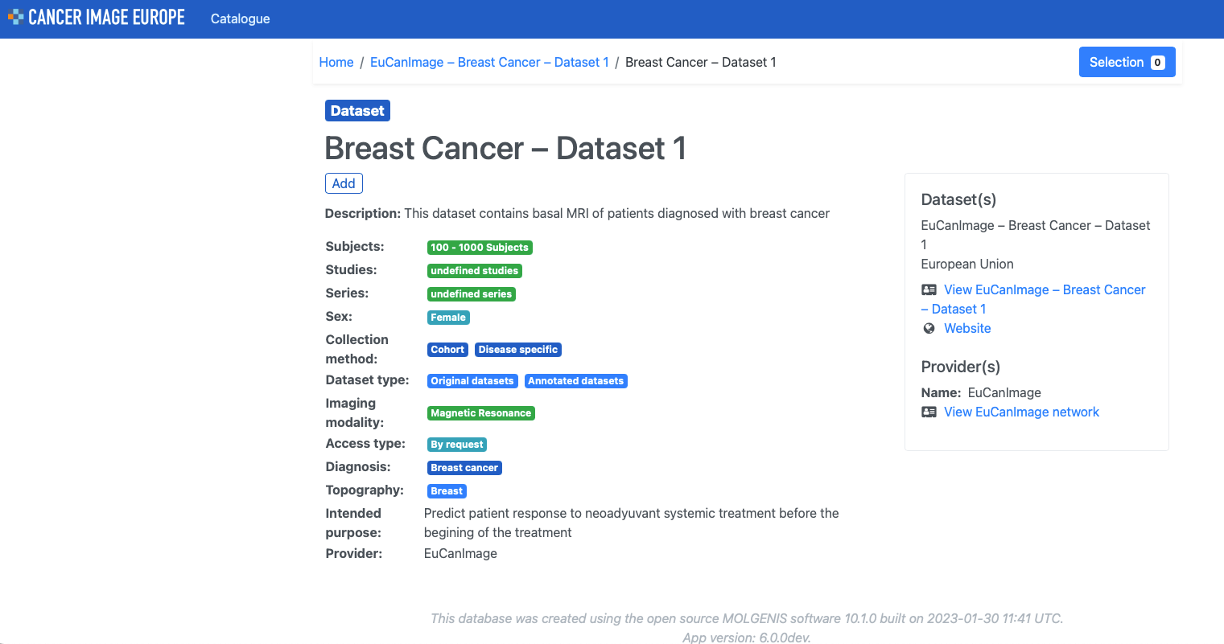
Spotlight on the Population Imaging Node’s contribution to EUCAIM
In October 2023, the EUCAIM consortium announced the first public release of its platform, Cancer Image Europe, marking a major milestone in the project’s development and an exciting step towards achieving its vision and goals. We spoke to Esther Bron, Assistant Professor of Neuroimage Analysis and Machine Learning at ERASMUS MC, part of our Population Imaging Node, and her colleague, Alexander Harms, a research software engineer also at the Population Imaging Node. Both are actively involved in the EUCAIM Project. They told us about the platform release, how they contributed to it, and explained the potential of the EUCAIM project for researchers and imaging core facilities.
“EUCAIM is a very big project,” states Esther Bron, who manages ERASMUS MC’s contribution to it. The consortium, led by EIBIR, includes 76 partners from clinical data providers, researchers, research infrastructures, and industry, including the Euro-BioImaging Hub team and four Euro-BioImaging Nodes (DIMP Neuromed, Portuguese Brain Imaging Network Node (University of Coimbra), IRCSS SDN, part of the MMMI Italian Node as well as the Population Imaging Flagship Node Rotterdam (ERASMUS MC)).
“Together we will reach the goal of developing a platform that collects imaging data and relevant metadata in a findable, accessible space, making it possible for researchers and industry to share and analyze cancer data across Europe,” explains Esther.
EUCAIM aims to unite all of the EU-funded cancer projects and make it into one platform. “The first platform release takes the best datasets from all of the previous Cancer Mission projects: CHAIMELEON, EUCanImage, etc., and makes them available in a platform of platforms,” explains Esther. “Ultimately, the platform will include new datasets – and we welcome contributions. The ultimate goal is to build up validated clinical decision-making systems supporting diagnosis, treatment and predictive medicine.”
What are the benefits?
“It’s still not clear how to share data,” explains Esther. “For data providers, namely clinical researchers, availability in public repositories is often limited. Policies are complicated, as are the data analysis technologies. All of these are barriers for the development and benchmarking of AI tools. The goal of EUCAIM is to have a central place with easier policies & technologies for diverse stakeholders to facilitate data sharing and make progress towards these goals. In the future, EUCAIM will be the go-to place for data producers and data users across Europe.”
What is the Population Imaging Node’s contribution to the platform release?
As a software engineer, Alexander Harms has been actively involved in the EUCAIM platform release. He is an expert in the Molgenis software, an open source software that supports many scientific catalogues. He developed expertise in Molgenis via the EUCanImage project.
“My role was to work with the team implementing the EUCAIM catalogue into the Molgenis software and make sure the user interface is easy to use. One important aspect is to accurately but clearly represent metadata from datasets, something we developed in collaboration with other work packages. We have also been involved in interfacing and connecting the catalogue to the other components of the platform.”


“As someone who also contributed to the EUCanImage project,” says Alexander, “I think it’s extremely beneficial that all the knowledge and experience from the previous cancer research projects can culminate in a new project, EUCAIM. This project is extremely ambitious and will take things to a higher level.”
How can Euro-BioImaging Nodes get involved?
“What we’ve been working on so far in the project hasn’t really been imaging-specific,” says Esther Bron. “But everyone is encouraged to share datasets that would be interesting for other cancer data imaging datasets. The procedure is clearly described on the platform.”
“In later phases of the project, there will be some AI models and federated analysis,” explains Esther Bron. “This is the ultimate goal: To have data at multiple places, do analysis at multiple locations. So the whole community of image data producers will ultimately benefit, including Euro-BioImaging Nodes.”
During Spring 2024, the EUCAIM project will launch an external open call for new beneficiaries to join the consortium, which will pursue the onboarding of:
i) new data providers, increasing the geographic dimensions, data modalities or cancer targets, and
ii) the uptake of new trustworthy AI algorithms trained on the data of the repository.
This will happen through clinical use cases, allowing to drive the design of the EUCAIM infrastructure and help define requirements, test functionality, and validation process for a clinical improvement.
In conclusion, EUCAIM will support the piloting and development of innovative computer-aided solutions to achieve greater accuracy and reliability in cancer imaging and personalised care, in line with the objectives of the Europe’s Beating Cancer Plan.
More news from Euro-BioImaging


